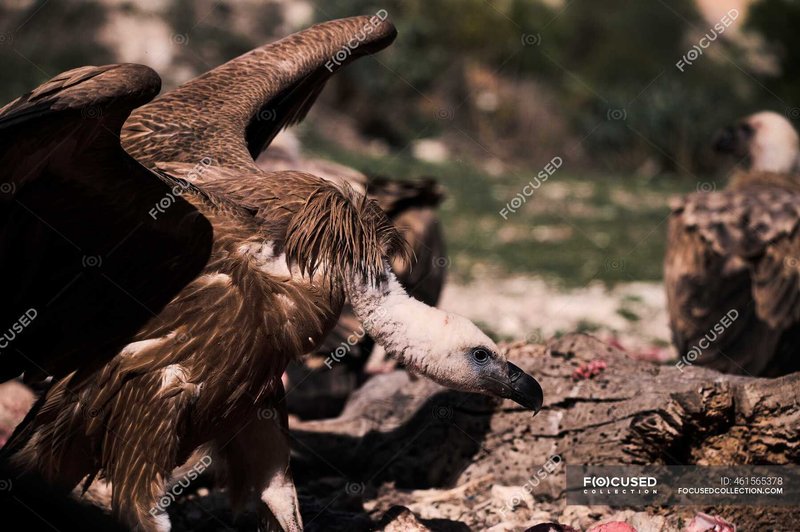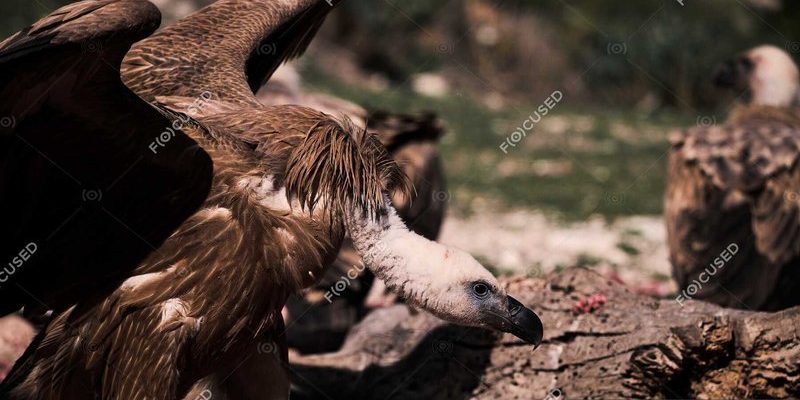
You might think of the Griffon Vulture as a master of survival, equipped with natural tools and instincts that help it navigate a challenging world. Their adaptations are not just fascinating; they’re a perfect example of nature’s clever design. From powerful wings to a unique feeding strategy, let’s dive into how these birds manage to make a life for themselves in rugged terrains.
Powerful Wings for Efficient Flying
Griffon Vultures are built for the sky. Their wings can span over eight feet! This large wingspan allows them to glide effortlessly on thermal currents. Instead of flapping their wings all the time, they take advantage of rising warm air, which helps them soar high without using much energy. Imagine being able to ride the wind while barely breaking a sweat—sounds pretty great, right?
This ability to soar efficiently means Griffon Vultures can cover vast distances in search of food. They can fly over 150 kilometers in a single day, scouting for carrion from high above. Their keen eyesight helps them spot potential meals on the ground, which is crucial when food can be scarce. With their impressive flying skills, they can efficiently navigate their environment while conserving energy.
Adaptations for Feeding
Griffon Vultures are scavengers, which means they rely on finding dead animals to eat. This is where their unique adaptations shine. They have strong, hooked beaks designed to tear apart tough hides and access the meat within. It’s like having a built-in knife! This specialized beak allows them to consume animals that smaller birds might struggle with.
Another fascinating aspect of their feeding behavior is their social structure. Griffon Vultures often feed in groups, which allows them to tackle larger carcasses more efficiently. When they find a meal, they call to each other, drawing in fellow vultures. This teamwork is essential, as it increases their chances of finding food in an environment where resources are limited.
Thermoregulation and Comfort
Living in diverse environments, from rocky cliffs to open plains, Griffon Vultures need to regulate their body temperature effectively. One of their key adaptations for thermoregulation is their feather structure. Unlike some birds, Griffon Vultures have fewer feathers on their heads and necks. This unique trait helps them stay cool while they feed on carcasses, as it allows for better heat dissipation.
You might also notice them spreading their wings and basking under the sun. This isn’t just for show; it helps them warm up after a chilly night. They can also increase their blood flow to certain areas of their body to help adjust to temperature changes, ensuring they’re always comfortable and ready for flight.
Sensitive Nostrils for Scavenging
Unlike some birds of prey, Griffon Vultures have relatively weak sense of smell. Instead, they rely heavily on their excellent eyesight to locate food. They can see carrion from miles away, making them incredibly effective scavengers. Their eyes are large and positioned for a wide field of view, allowing them to spot potential meals while flying high above the ground.
When they do come across a carcass, they depend on their sharp eyesight and the presence of other scavengers. Often, they follow other birds or even land animals that might be leading them to a food source. This behavior highlights how interconnected the ecosystem can be, with various species working together in an unspoken network.
Breeding and Nesting Adaptations
Griffon Vultures are monogamous and usually mate for life. When it comes to breeding, they choose high, inaccessible cliffs to build their nests. This is a strategic choice; it keeps their young safe from potential predators. Their nests are built from sticks, grass, and feathers, creating a cozy environment for their chicks.
The female typically lays one or two eggs, which both parents incubate. Once hatched, the chicks are altricial, meaning they rely heavily on their parents for food and protection. Interestingly, the parents regurgitate food for the chicks, ensuring they get the necessary nutrients to grow strong. It’s a nurturing approach that showcases their commitment to raising their young in a safe environment.
The Role in Ecosystem Balance
Griffon Vultures play a crucial role in maintaining ecosystem health. By scavenging on dead animals, they help prevent the spread of disease. Imagine a world where carcasses were left to rot; it would be a smelly mess! By consuming these remains, vultures act as nature’s clean-up crew, ensuring that the environment remains balanced and healthy.
Their presence in the ecosystem signals a healthy food web. A decline in vulture populations can indicate larger issues in the environment, like dwindling prey or increased pollution. Conservation efforts are essential to protect these magnificent birds and the role they play in their habitats.
Conservation Challenges and Efforts
Despite their adaptability, Griffon Vultures face several threats. Habitat loss, poisoning, and hunting have significantly decreased their populations in some regions. Conservation efforts are underway to protect them, including habitat restoration and legal protections against hunting.
Organizations work tirelessly to raise awareness about the importance of vultures and to implement measures that ensure their survival. Educating local communities about the benefits of vultures can also foster a sense of guardianship over these impressive birds.
In conclusion, Griffon Vultures are more than just scavengers; they are vital players in their ecosystems. Their adaptations, from powerful wings to unique feeding strategies, allow them to thrive in challenging environments. As we learn more about these fascinating birds, we heighten our appreciation for the balance of nature and the critical role each species plays in our world. It’s a beautiful, intricate dance of life that deserves our respect and protection.

